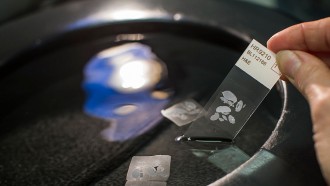Scientists have again examined the DNA of the renowned glacier mummy known as Oetzi the Iceman to create a more precise portrayal of this prehistoric hunter decades after he was found in the Italian Alps. The Cell Genomics research, released Wednesday, illuminates Oetzi's ancestry, appearance, and health.
Oetzi died after being hit in the back by an arrow and stuck in the ice around 5,000 years ago. Hikers found his "natural mummy," well-preserved bones, in the Tyrolean Alps near the Austrian-Italian border in 1991.
A copper ax, longbow, and bearskin headgear were found along with his remains, according to The Columbian. Oetzi's mummy is now exhibited in the South Tyrol Museum of Archaeology in Bolzano, Italy. These items have shed crucial light on life during the period.
The Ice Man's genome was first released in 2012, but new findings in ancient DNA studies encouraged researchers to reexamine his genes. One of the study's authors and geneticists at the Max Planck Institute for Evolutionary Anthropology in Germany, Johannes Krause, revealed that the group utilized DNA taken from Oetzi's hip bone to conduct a more in-depth investigation.
How Oetzi Looked Like?
The results revealed a startling portrait of the ancient ice man. Oetzi was shown to have been predominantly derived from Anatolian farmers in modern-day Turkey, contrary to earlier theories.
His look also differed from previously thought, with a balding head and darker complexion, per CNN. These results expose the biases that may affect historical reconstructions and cast doubt on popular notions of what individuals in the Stone Age may have looked like.
Read Also: Chagas Disease: Hidden Health Risk in the US; Here's What to Know
Oetzi's look at the time of his death, around age 45, is very similar to the mummy's appearance today: dark-skinned and with little hair, according to Albert Zink, director of the Institute for Mummy Studies at Eurac Research in Italy and another research author. It was discovered that the earlier assumption that Oetzi had a lighter complexion and more hair in real life was untrue.
Oetzi's Story Uncovered
The DNA of Oetzi The Iceman provided information on his health in addition to his looks. The results showed a higher propensity for obesity and diabetes. His background also revealed that he had been a member of a remote community in the Alps. Oetzi inherited 92% of his heritage from Anatolian farmers, unlike most modern Europeans, who are a genetic admixture of diverse ethnicities.
Additionally, it was implied by the genetic evidence that Oetzi's group was relatively tiny and isolated in the Alpine setting. Due to the Alps' role as a natural barrier, there was a low possibility of genetic mixing with neighboring populations, per the Smithsonian Magazine.
The research highlights a significant step forward in our knowledge of Oetzi's life, contradicting long-held beliefs and giving us a clearer picture of the past. The study of ancient DNA is helping to rewrite our understanding of history and cast fresh light on the legends of our prehistoric forebears, such as Oetzi the Iceman.
Related Article: Archaeologists in Israel Discover 'Most Ancient Gate' From 5,500 Years Ago





